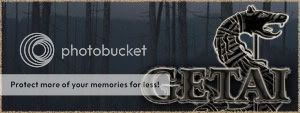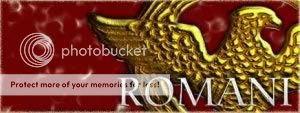I frequently ask myself if big shields should have higher defense values.
At first glance, they seem fine. But chevrons change the story. While playing the campaign map, my missile troops rack up lots of chevrons. I have quite a few horse archers with one or two gold chevrons, and mercenary cretan archers with two and three silver chevrons. It is very easy for archers to accumulate chevrons because they have lower casualty rates.
Large shields were very effective at blocking arrows, regardless of the skill of the archer. And since archers rack up chevrons so quickly... My guess is that the defense value of these shields should be measured, not against the the basic attack value of an archer, but against the attack value of archers with a few chevrons on their belt.
On the other hand, I was very impressed by two books I read recently. One of them, narrates how Caesar marched ahead of his soldiers who were afraid to attack uphill against an opposing Roman Legion (during the civil war). He grabbed a shield from a soldier and marched halfway up the hill. The opposing romans threw a volley of pilums at Caesar. He ducked behind the shield and survived the whole thing. After that, his legion attacked and won the day.
The other book explains that the Roman soldiers were shorter than the average man today (perhaps about 5'4" or 5'6") Yet, the shield was over 4' top to bottom. If that is so, and you further assume that the soldier would tend to crouch behind his shield when approaching his enemy, what you have left sticking out of the shield was probably just the soldiers' helmet. So, these shields were almost like a moving wall the soldiers carried in front of them.
...any thoughts?





 Reply With Quote
Reply With Quote +
+ =
=

 for
for 




 >
> >
> >All the rest.
>All the rest.






Bookmarks